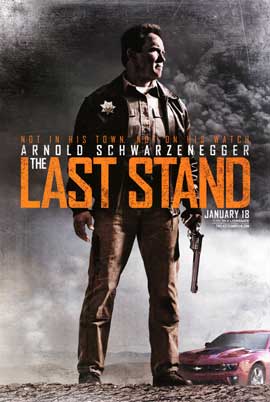“Mama”
Guillermo del Toro is a man who genuinely loves horror movies. Even when he isn’t making horror movies of his own (such as “Pans Labyrinth” and “The Devil’s Backbone”), he is producing original horror works by newcomer directors. Even though not all of them have been of consistent quality (for every great “The Orphanage” there is an average “Don’t Be Afraid of the Dark”), there has been a constant theme of horror mixed with the dark fantasy that his directed work is known for. His new producing effort, “Mama,” is closer to the lower end of the spectrum, although it’s positive virtues are strong enough to counterbalance the many stumbles along the way.
Through a series of events that start with the 2008 financial crisis, a father kills his wife and coworkers and then takes off with his two daughters. The three of them mysteriously disappear and aren’t heard from for five years. During that time, the father’s twin brother has been tirelessly searching for them, to the irritation of his punk rocker girlfriend since the two of them are strapped for cash. When the girls are miraculously found alive, they are put under their uncle’s care in a house where they can be observed and reintegrated back into society. However, the ghostly being, who the girls call Mama, that looked after them all these years isn’t too keen on them being taken away, and begins terrorizing the couple.
Ironically, despite being ostensibly a horror movie, “Mama” is more successful and compelling when it comes to the characters and the initial premise than it is when it turns up the scares. The traditional trappings and beats of other ghost and haunted house movies are frequently hit, so there is a been-there-done-that vibe that has to be overcome. While director Andres Muschietti (adapting his own short film) doesn’t have a grasp on suspense like the best horror directors out there, he has verve to carry out these sequences to creepy enough effect, and conceives of a few creative bits. The one that stood out the most was a sly camera trick where it appears as if the two sisters are playing with a blanket, only for us to see the uncle’s girlfriend, Annabel, and the other sister in the opposite room.
Unfortunately, these scares are rather spaciously spread apart, which leaves some sections of the movie hanging with dead air. But thankfully, the acting and character development is uncharacteristically above average for a horror picture. The actresses playing sisters Victoria and Lilly, Megan Charpentier and Isabelle Nelisse respectively, do a superb job of portraying both the feral and sweet sides of these girls. Their first appearance after the five-year gap is arguably scarier than any of Mama’s ghostly tricks, primarily due to the convincingly wild and animalistic acting on the part of these two girls. It also helps that the Oscar nominated Jessica Chastain is playing Annabel. Annabel’s contentious relationship with the girls and her unease about being shoved into a mother role she didn’t ask for provides a compelling backbone to latch onto. Annabel could have easily been unlikable and annoying in the hands of a lesser actress, but Chastain is able to walk that fine line by absolutely selling her character’s transformation.
While the core plot dynamics are solid, Muschietti is unsteady when it comes to exploring Mama herself. There are points where it seems like he did not know how to incorporate some background details or a necessary character action, so he awkwardly shoehorns in unexplained visions for an exposition dump. And when the plot arrives at its conclusion, the ideas behind this end point are certainly unique, although the execution could have been refined. The special effects become overly elaborate, and the tone shifts suddenly from out-and-out horror to something closer to one of del Toro’s dark fantasies. Had the presence of these fantasy elements been emphasized previously rather than rely on the usual ghost movie scares, this shift would have felt more natural.
Because of these deficiencies, I would not exactly call “Mama” a particularly good horror movie. With that said, I greatly appreciated Muschietti’s ability to create well-developed characters (a rarity in this genre) and inject some creativity even amid the more familiar parts. I would like to see what he could do in a future film, perhaps taking more time to refine the screenplay, since it looks like he has the talent to pull off something more noteworthy. “Mama” is not exactly a smash debut for the man, though it shows glimmers of promise for what he could possibly achieve, which is more than I can say for the hacks typically hired to churn out a fast and cheap studio horror movie.
2.5/4




